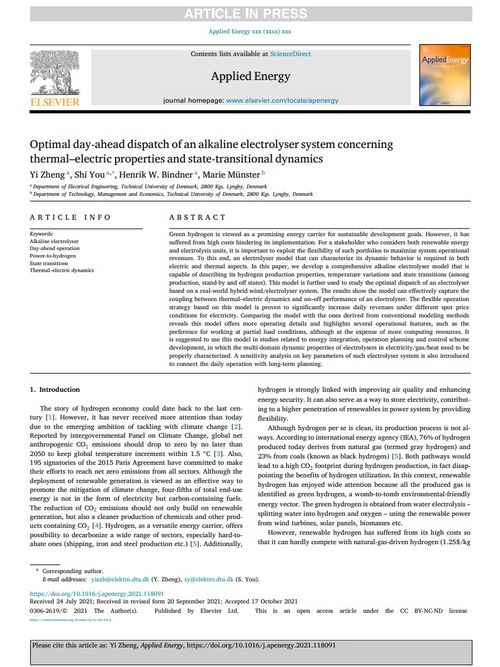Green hydrogen is viewed as a promising energy carrier for sustainable development goals. However, it has suffered from high costs hindering its implementation. For a stakeholder who considers both renewable energy and electrolysis units, it is important to exploit the flexibility of such portfolios to maximize system operational revenues. To this end, an electrolyser model that can characterize its dynamic behavior is required in both electric and thermal aspects. In this paper, we develop a comprehensive alkaline electrolyser model that is capable of describing its hydrogen production properties, temperature variations and state transitions (among production, stand-by and off states). This model is further used to study the optimal dispatch of an electrolyser based on a real-world hybrid wind/electrolyser system. The results show the model can effectively capture the coupling between thermal–electric dynamics and on–off performance of an electrolyser. The flexible operation strategy based on this model is proven to significantly increase daily revenues under different spot price conditions for electricity. Comparing the model with the ones derived from conventional modeling methods reveals this model offers more operating details and highlights several operational features, such as the preference for working at partial load conditions, although at the expense of more computing resources. It is suggested to use this model in studies related to energy integration, operation planning and control scheme development, in which the multi-domain dynamic properties of electrolysers in electricity/gas/heat need to be properly characterized. A sensitivity analysis on key parameters of such electrolyser system is also introduced to connect the daily operation with long-term planning.


